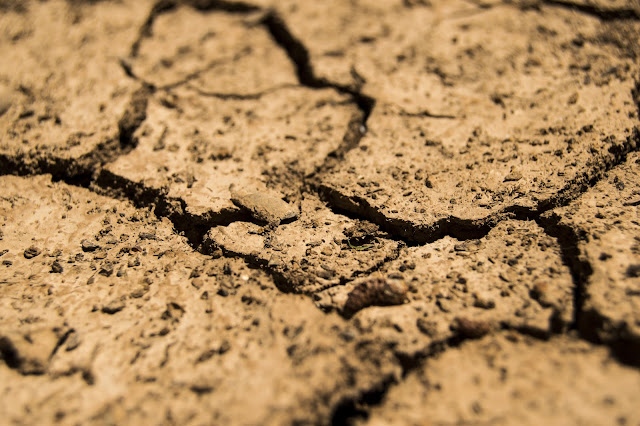Introduction:
Soil, a crucial natural resource, supports a wide range of human activities such as agriculture, construction, and geotechnical engineering. The properties of soil have a significant impact on its suitability for various purposes. In this context, the concept of index properties of soil comes into play. Index properties of soil are a set of physical properties that are used to describe soil behaviour and its engineering characteristics. This article provides a comprehensive guide to index properties of soil, their significance, and the methods used to determine them.
The Vital Role of Index Properties in Soil Characterization
Soil index
properties play a crucial role in characterizing soil and determining its
suitability for various purposes. Some of the key uses of index properties of
soil include:
- Agricultural
purposes: Index
properties of soil help in determining the suitability of soil for agriculture
and the type of crops that can be grown on it.
- Construction
purposes: Index
properties of soil play a crucial role in determining the stability of the soil
for construction purposes.
- Geotechnical Engineering: Index properties of soil are used in geotechnical engineering to design and construct safe and efficient structures.
Index Properties of Soil: An Overview
The index
properties of soil can be broadly classified into two categories:
- Particle-Size
Distribution Properties: These properties describe the size, shape, and distribution of soil
particles. Examples of particle-size distribution properties include grain size
distribution, uniformity coefficient, and coefficient of curvature.
- Atterberg Limits Properties: These properties describe the consistency of the soil and its behaviour at different moisture contents. Examples of Atterberg limits properties include liquid limit, plastic limit, and shrinkage limit.
Index Properties of soil are:
- Soil
Texture: This refers
to the proportion of sand, silt, and clay in your soil. Soils with a balanced
mixture of these components have a good structure and water-holding capacity,
making them ideal for gardening.
- Soil
Structure: This
refers to the way soil particles are arranged and grouped together. Good soil
structure allows for easy root growth, water infiltration, and air exchange.
- Soil
Porosity: This
refers to the amount of space in the soil that is filled with air and water.
Good soil porosity is important for root growth and water infiltration.
- Soil
Compaction: This
refers to the degree to which soil particles are compacted and squeezed
together, reducing the amount of space available for air and water. Excessive
compaction can lead to poor root growth and water infiltration.
- Soil pH: This refers to the acidity or
alkalinity of the soil. Different plants have different pH preferences, so it's
important to understand your soil's pH and adjust it as necessary to provide
the ideal growing environment for your plants.
- Soil
Organic Matter: This
refers to the amount of organic matter, such as leaves and plant debris, in the
soil. Organic matter helps improve soil structure, water-holding capacity, and
nutrient availability.
- Soil
Cation Exchange Capacity (CEC): This refers to the soil's ability to hold onto and exchange
positively charged ions, such as calcium, magnesium, and potassium. A high CEC
indicates soil that can retain nutrients effectively.
- Soil Bulk
Density: This refers
to the mass of dry soil per unit volume. High bulk density can lead to soil
compaction, reducing root growth and water infiltration.
- Soil
Salinity: This
refers to the number of salts in the soil. High soil salinity can be toxic to
plants and reduce growth.
- Soil
Aeration: This
refers to the availability of oxygen in the soil. Good soil aeration is
important for root respiration and overall plant health.
- Water
Content: This refers
to the amount of water present in the soil. The water content of soil can vary
depending on factors such as climate, soil type, and the amount of available
water in the surrounding area.
- Specific
Gravity: This refers
to the ratio of the density of soil to the density of water. Soils with a high
specific gravity tend to have a high density, while soils with a low specific
gravity tend to have a low density.
- Particle
Size Distribution:
This refers to the distribution of soil particles of different sizes within the
soil. Particle size distribution can affect soil structure, porosity, and
water-holding capacity.
- In situ
Density: This refers
to the density of soil in its natural, undisturbed state. In situ density can
provide information about the compaction and stability of the soil and can be
used to assess the potential for soil erosion or slope failure.
- Density
Index: This refers
to the ratio of the in-situ density of soil to the maximum density of the
same soil. The density index can provide information about the degree of
compaction in soil and can be used to assess the potential for soil erosion
or slope failure.
Methods to Determine Index Properties of Soil
There are
various methods used to determine the index properties of soil, some of which
are discussed below:
- Sieve
Analysis: This
method is used to determine the grain size distribution of soil particles. It
involves sieving the soil through a set of standardized sieves of available sizes
to determine the particle size distribution.
- Hydrometer
Analysis: This
method is used to determine the particle size distribution of fine-grained
soils. It involves measuring the settling velocity of soil particles in a fluid
and using it to select their size.
- Atterberg
Limits Tests: There
are various tests that are used to determine the Atterberg limits of soil,
including the Casagrande method and the Fall cone method.
Frequently Asked Questions on Index Properties of Soil
1. What are the index properties of soil?
Index
properties of soil are a set of physical properties that are used to describe
soil behaviour and its engineering characteristics.
2. What is the significance of the index properties of soil?
Index
properties play a crucial role in characterizing soil and determining
its suitability for various purposes such as agriculture, construction, and
geotechnical engineering.
3. What are the two categories of index properties of soil?
The index properties of soil can be broadly classified into two categories: particle-size distribution properties and Atterberg limits properties.
.jpg)





.png)



If you have any doubts or want to learn about any specific topics, please let me know.